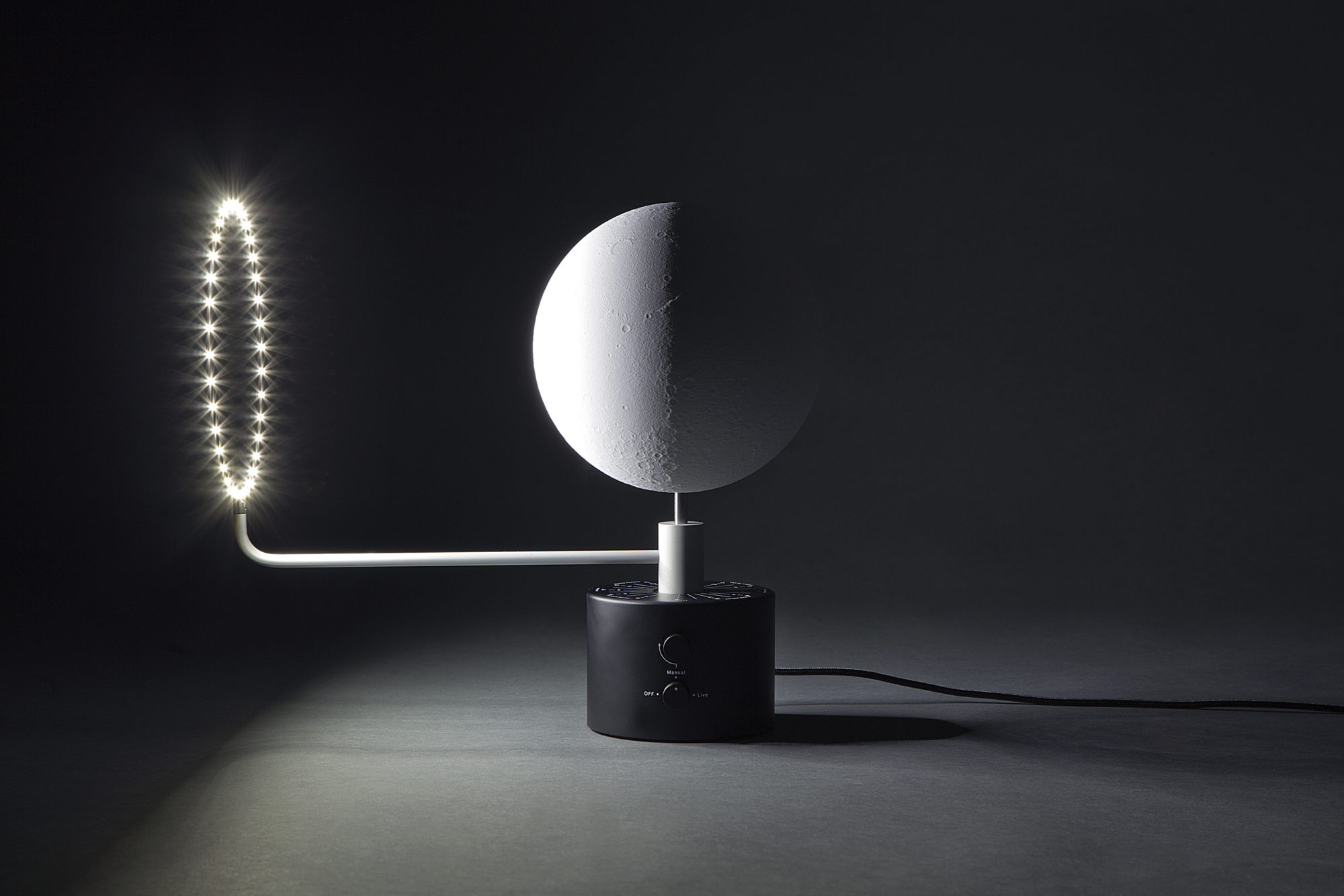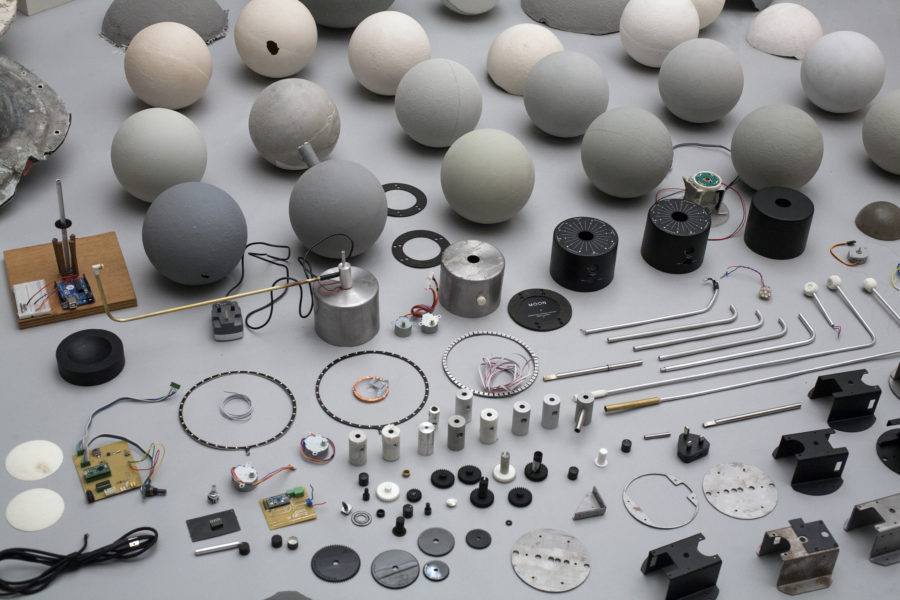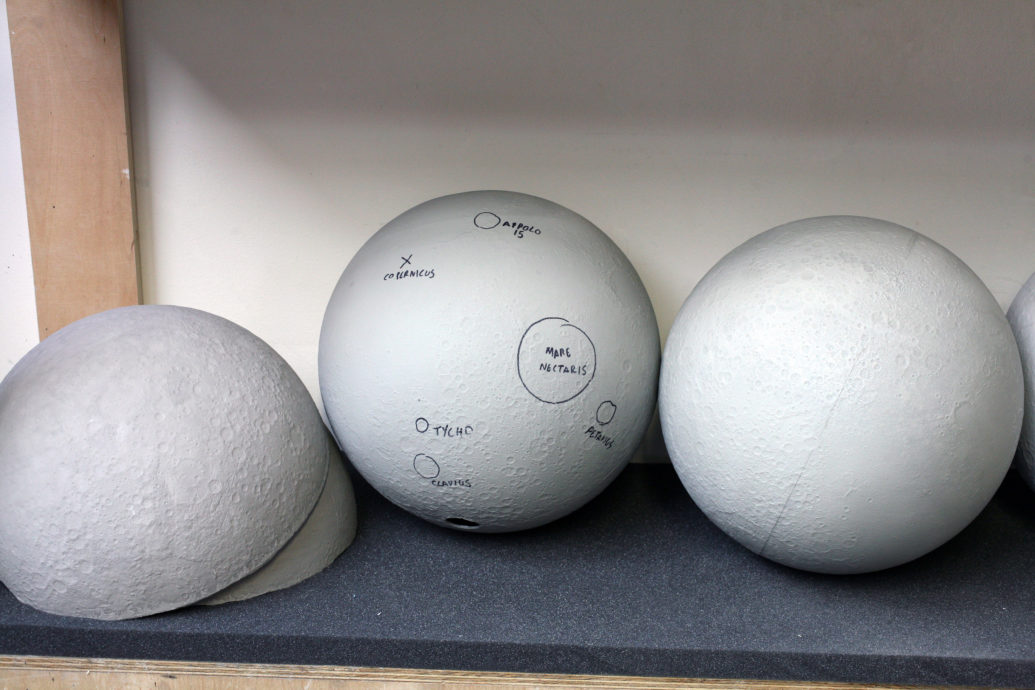As part of his thesis project at the Royal College of Art, Oscar Lhermitte installed a series of outdoor constellations—made of string and LEDs secured between neighboring trees some 65 feet overhead—around London. After graduating, he discovered images from NASA’s Lunar Reconnaissance Orbiter mission depicting the surface of the moon—and wondered if there was enough data to replicate it on earth.
His most recent project, the Moon Lamp, is a 3D-printed lunar globe that depicts the real thing’s nooks and crannies at a 1:20-millionth scale. A ring of LEDs orbits the sphere, showing the phases of the moon in real time. The Moon Lamp has three settings: live (synchronized with the actual moon), manual (pick the lunar phase to see), and demo (observe a synodic month in 30 seconds). The first is most alluring: used in the dark, the lamp projects a circular shadow onto surrounding walls that silently sails around the room.
“No one has done this before, at least not to an accurate level,” the French designer says. Astronauts and astronomers typically use two-dimensional digital data, while the most accurate existing lunar globe, thought to be the Sky & Telescope Moon Globe, which uses images from the same NASA mission, pinpoints major landmarks on a smooth surface. So when Lhermitte cold-emailed his idea to NASA, it was happy to support the project. He was soon connected with the German Aerospace Research Center, which gave him access to its internal database of satellite imagery, and Lhermitte set to work.
He began by creating an authentic 3D model of the moon. Lhermitte imported the NASA photos into CAD software, translating the images’ gray patches into topographical data that was then fed into an industrial nylon 3D printer; the printed, dimpled orb was used to make a mold. (To produce the most detailed casting possible, Lhermitte worked with a local art fabricator that specializes in mold-making to better understand the science behind it.) Each Moon Lamp is roto-cast in Lhermitte’s London studio using pigmented polyurethane resin, resulting in a snowy, concrete-like hue.








